Take a look at costs, benefits and drawbacks, efficiency, and other factors.
Nothing compares to the warmth of a house during the winter months. For your living area to remain comfortable, a home heating system is essential.
A heating system operates by spreading thermal energy throughout your home from a fuel source, such as gas or electricity. Different heating system types exist, each with special characteristics and advantages. There is a heating unit that is ideal for you, ranging from radiant floor systems that warm from the ground up to forced-air systems that pump hot air.
In fact, you can have many heating systems based on your needs. Perhaps you need a heater in your garage where the central air ducts don’t reach, or you want additional warmth in a cold basement. This blog is your go-to source whether you’re a renter searching for choices, a homeowner trying to improve, or someone who simply wants to remain warm.
In order to assist you in selecting the ideal heating system for your house, let’s examine a few types of home heating systems and examine how they operate, as well as their benefits and drawbacks.
Different Types of Home Heating Systems
Let’s take a look into the advantages and disadvantages of each of the 12 types of home heating systems to choose the one that will work best for your house.
1. Furnaces
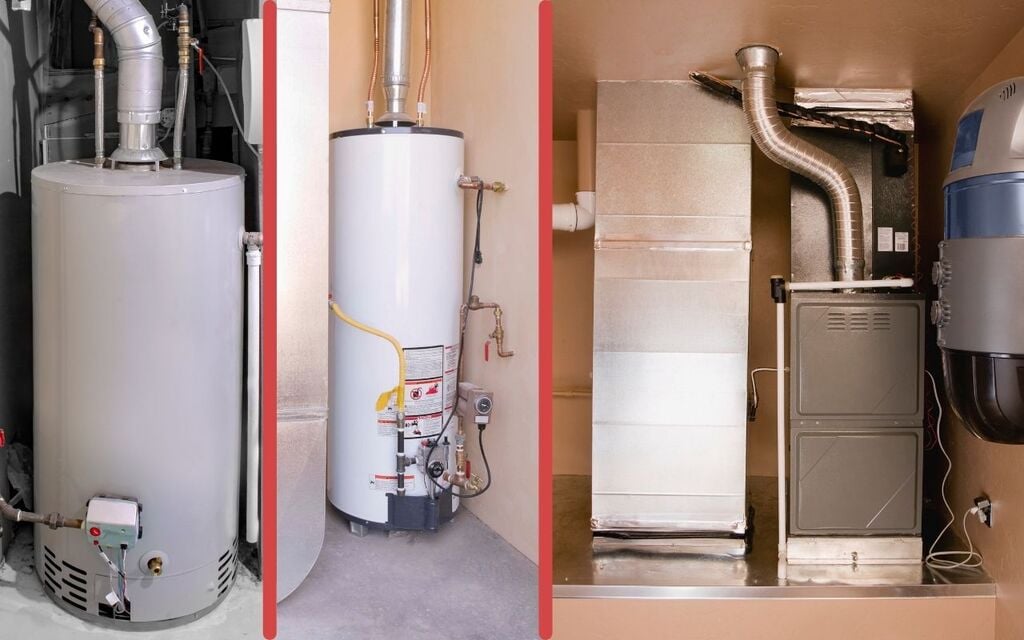
In the US, furnaces are still the most popular option for heating systems since they have withstood the test of time. With the exception of the hot and humid Southeast, natural gas furnaces are the most often utilized heating technology in the nation, per a 2015 Residential Energy Consumption Survey. According to Statista, an astounding 47% of US families use natural gas as their main source of heat, and even newly built dwellings favor gas consumption. In addition, fuel oil and electricity may power furnaces.
In order to heat air and circulate it throughout the house via the forced-air system, a furnace must consume a fuel source. Through a system of ducts and vents in each room, a blower fan distributes hot air. Venting occurs outside for combustion byproducts, usually by a chimney. A thermostat regulates the furnace’s operation to maintain the intended indoor temperature. It sets the furnace’s desired temperature.
Selecting the right furnace for your requirements is essential since they are available in a variety of styles and efficiency levels. A furnace’s size must correspond to the size of your house and the local environment. A furnace that is too small or huge may cause problems with comfort, performance, and energy efficiency.
AFUE, or annual fuel use efficiency, is a measure of a furnace’s efficiency. The furnace is more efficient the greater the AFUE. By comparing heat production to fuel spent, AFUE determines how efficiently the furnace uses fuel all year round.
An AFUE of 90%, for instance, indicates that 90% of the fuel energy is converted to heat, with the remaining 10% being lost via chimneys and other openings. The attic is one example of an unconditioned or partly conditioned space where heat losses via ductwork may reach 35%. It’s important to keep in mind that AFUE does not take these losses into account.
Furnace cost: Purchasing this item typically costs between $5,000 and $10,000. However, the price might change depending on your home’s square footage and furnace type. The cost will increase for bigger homes that need high-efficiency furnaces.
| Pros | Cons |
| Outperforms other heating systems with the highest AFUE rating. | The possibility of a fire or carbon monoxide poisoning exists with gas furnaces. |
| Requires less upkeep than other types of heating systems. | Heat escaping via duct leaks or perforations may result in inefficiency. |
| Not too costly to run. | Significant ducting installation is necessary. |
| Summer cooling is possible by combining forced air systems with cooling systems. | May blast dust in the air if filters aren’t changed on a regular basis. |
2. Boiler Heaters
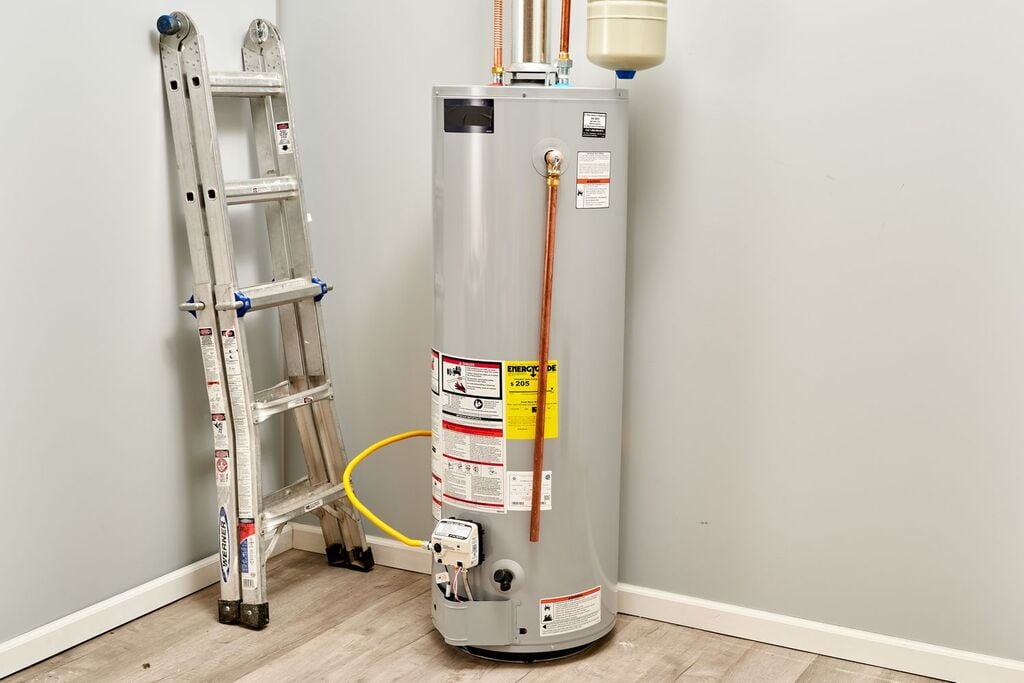
The way that boilers and furnaces produce heat is different. Boilers are a kind of heating system that runs on hot water, while furnaces utilize heated air. They are a better choice for allergy sufferers since they don’t release dust or other indoor air pollutants as furnaces do.
Boilers, also referred to as hydronic or hot water systems, transfer heat via water. Under this configuration, water is heated in a central boiler and then sent to strategically positioned radiator units around your home via a network of pipes. After the cooled water returns to the boiler for reheating, the radiators distribute heat throughout the rooms.
There are mainly two types of boilers
- Steam Boilers: These move steam instead of water via pipes to the radiators. After releasing heat, the steam condenses back into water and goes back into the boiler to be heated again.
- Modern Boilers: These use electric pumps to circulate hot water to the radiators.
Boiler controls, such as valves, thermostats, and aquastats, control the temperature and movement of water. Boiler systems provide HVAC zones with fine control over heat distribution. You may customize the temperature in each room according to your preferences by installing a thermostat on each radiator. Boiler systems are a popular option in many older US houses and apartments because of their adaptability.
Boiler cost: $3,100 to $13,500
| Pros | Cons |
| They don’t release allergies or dust into the surrounding air. | Leaks in pipes might cause problems. |
| Improves the ability to regulate the distribution of heat across zones. | Not compatible with air conditioning units. |
| Unlike other heating methods, boiler heaters do not cause the air to become dry. | Radiators might detract from the aesthetics of your house. |
| Modern versions have very great energy efficiency. | – |
3. Heat Pumps
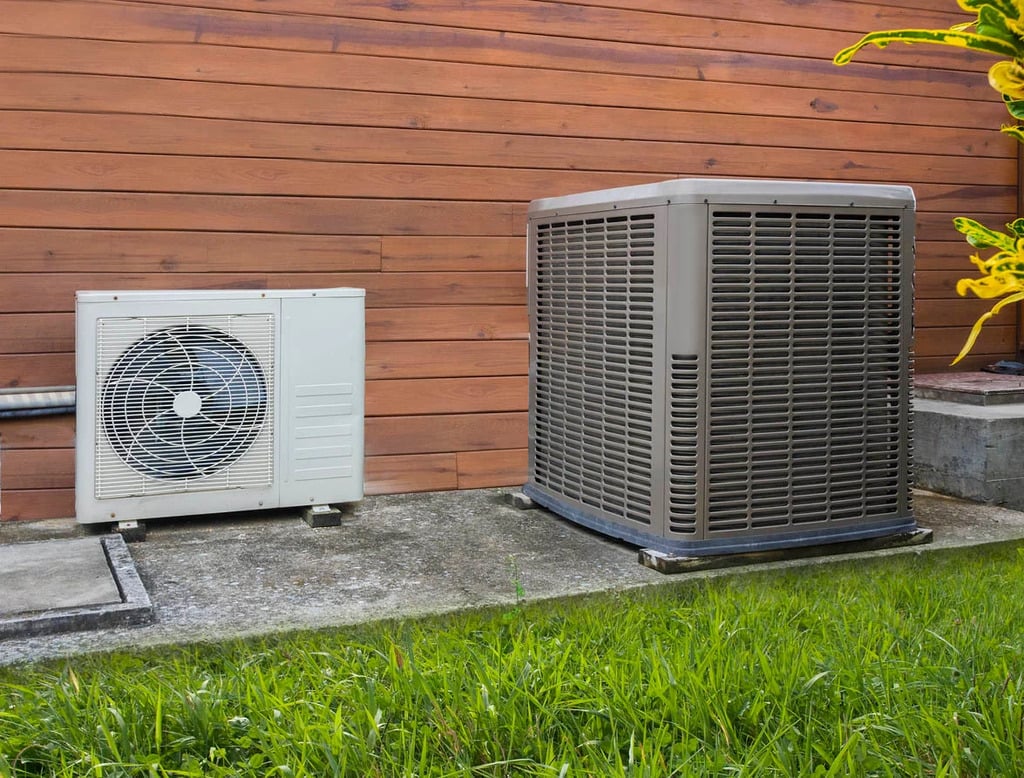
Due to their effective summertime cooling and wintertime heating qualities, heat pumps are becoming more and more popular among homeowners. In comparison to baseboard heaters and electric furnaces, they may cut heating-related power usage by up to 50%.
Air-source heat pumps are often used in homes. Through the use of a refrigerant, they transport heat from the outside air inside. To remove heat from your house in the summer, they do the opposite procedure.
Although natural gas-powered versions are also available, most heat pumps are powered by electricity.
To distribute air throughout your home, these systems make use of a ducted network. Consider a ductless mini-split heat pump if you would rather not have a lot of ducting in your unit. By reducing the amount of heat loss associated with central unit ducting, these systems maximize energy efficiency by delivering air directly to where it is required using interior air handlers.
Smart AC controllers on some versions allow for smartphone control for more versatility. Other varieties of heat pumps include water source heat pumps, which take heat from lakes or ponds, and geothermal systems, which take heat from the earth.
Since they move heat rather than create it, heat pumps are renowned for their efficiency. Because temperatures below 40 degrees might affect heat exchange, they are best suited for temperate regions. For maximum comfort in these situations, a furnace or other supplemental heating system may be used; this is covered in more depth below.
Heat pump cost: $3,500 to $8,800
| Pros | Cons |
| High level of energy effectiveness. | Not appropriate in very cold temperatures. |
| Able to serve as a heating and cooling system for a house. | More installation costs up front. |
| In particular, ductless mini-split heat pumps don’t need ductwork | – |
4. Hybrid Heating Systems
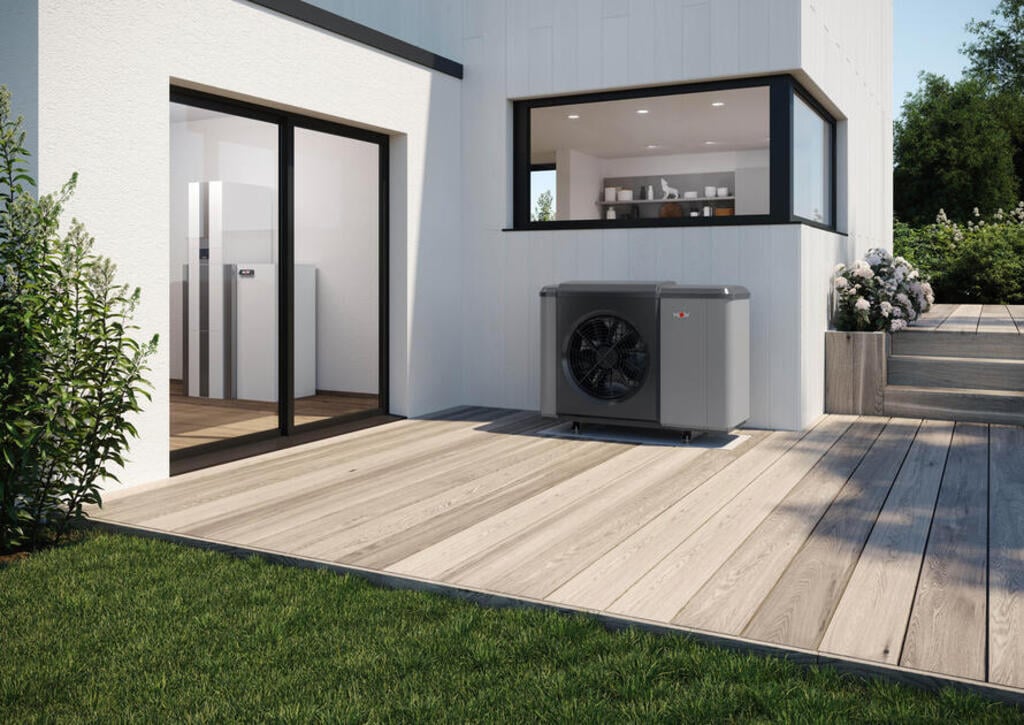
Heat pumps are a great option when it comes to energy efficiency, but they do have one drawback: they are not as effective in really cold climates. This is the application for dual fuel or hybrid heating systems for homes.
Combining an air-source heat pump with a gas furnace results in a hybrid heating system. This combination guarantees maximum comfort in the house, even during very cold weather.
The heat pump preserves the ideal temperature in your house throughout warmer months. On the other hand, the hybrid system smoothly switches to the gas furnace when the outside temperature drops below 40 degrees; you’ll see “Aux” or “EM Heat” on your thermostat.
When the cold weather arrives, you have the option to manually turn on the furnace or have this switch operate automatically, depending on the settings on your thermostat. In order to decide if supplemental heating is required, smart thermostats also take the outside weather into account.
The heat pump and furnace work together in hybrid systems, which lessens the pressure on each component, increases lifespan and minimizes the need for maintenance.
Hybrid heating system cost: $500 to $6,000
| Pros | Cons |
| Maximizes the amount of energy saved | Not required if you reside in a warmer climate |
| More energy-efficient than conventional furnaces and heat pumps | Requires regular upkeep |
| Excellent for very cold climates | |
| Lasts a long period and needs less maintenance |
5. Gravity Air Furnace Systems
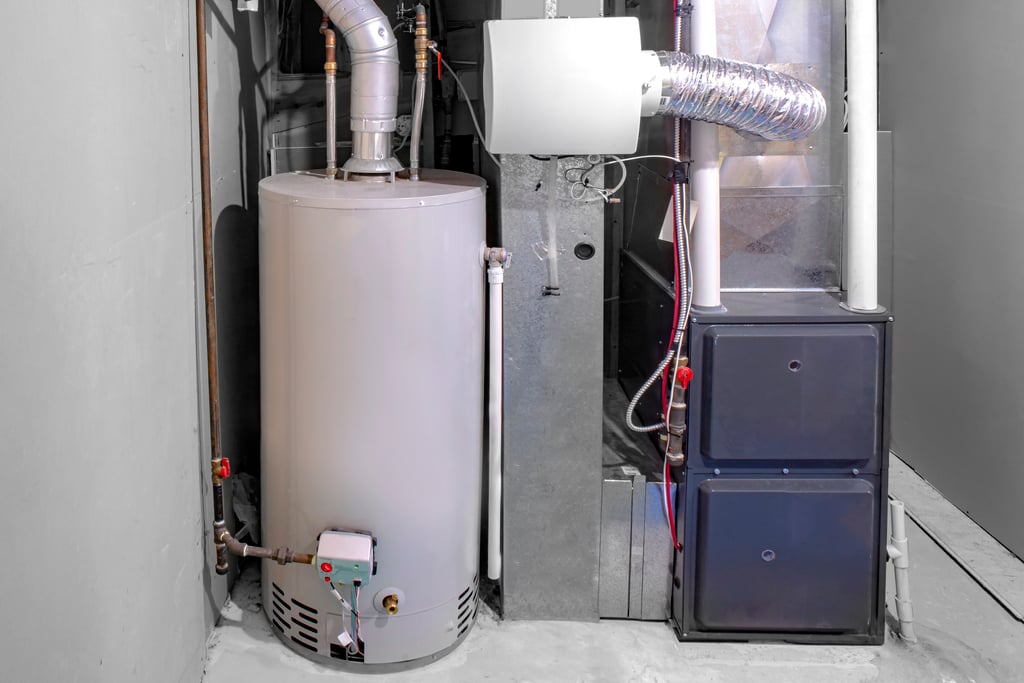
Homes built in the first half of the 20th century or earlier may include an unusual heating system known as the “Octopus furnace,” however, nowadays, they are quite uncommon. Because of its longevity and ease of use, it persists in some older houses even though it is less energy-efficient.
The gravity air furnace works on a different premise than conventional furnaces. It uses the convection currents in nature to heat your room, not aggressively forcing hot air. Natural convection is the upward movement of fluids due to their decreasing density as they heat up.
A furnace, usually located in the basement, serves as the system’s central component. By heating the air, you may let the warmed air rise into your rooms and use cold-air return ducts to return the colder air to the furnace. To your surprise, your house will stay warm without the need for electric fans or blowers since hot air circulates naturally via metal ducts.
It’s important to keep in mind, however, that because the furnace depends on the laws of nature, changing the temperature might take some time since hot air rises and cold air falls. Modern variations of gravity air furnaces run on electricity, natural gas, propane, or oil instead of coal. This heating unit has a long lifetime and needs less maintenance since it is simple and has fewer parts.
| Pros | Cons |
| Requires little upkeep | Huge and requiring a lot of room |
| Long-lasting | Less energy-efficient compared to more recent furnace types |
| Functions silently | It takes time to get to the temperature you want. |
6. Electric Resistant Heating Systems
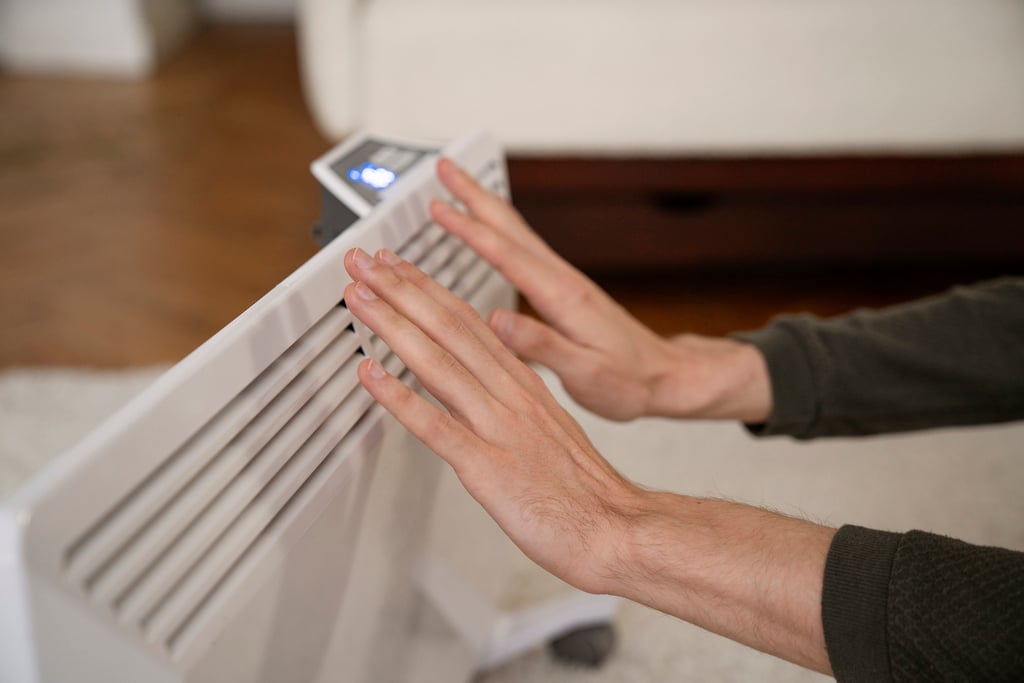
Many homes look for additional warmth during the winter months for spaces where major heating systems may not be accessible, such as garages, basements, or sunrooms. In this category, electric resistance systems are the best option. Installing these heating units couldn’t be easier: just plug them into an electrical outlet, and you’re good to go.
They are easily movable due to their portability. The fact that electric heaters need no ducting or other equipment means that they require less maintenance, which is another benefit.
There are two popular varieties of electric-resistant heating units:
Electric baseboard heaters: These are hardwired and installed at the base of the wall for a more permanent installation. The component of an electric baseboard heater is a thin, fin-equipped metal rod. The fins warm up as electricity flows through them, warming the air around them. The space becomes increasingly warmer as the hot air rises from the bottom.
Electric radiant heaters: The heaters heat items in the room by radiation, not the surrounding air. Placed in close proximity to the ceiling, they concentrate heat toward the room’s occupants, offering more efficient and targeted heating than baseboard heaters.
These types of electric heating systems for homes are quite expensive to operate as major sources of heat, even with their simplicity and use.
Electric resistant heating cost: $450 to $1,200
| Pros | Cons |
| Transportable, making it simple to transport between rooms. | Affordability varies according on personal requirements and choices. |
| Does not need a large installation. | High power use, which might result in higher costs. |
7. Active Solar Heating
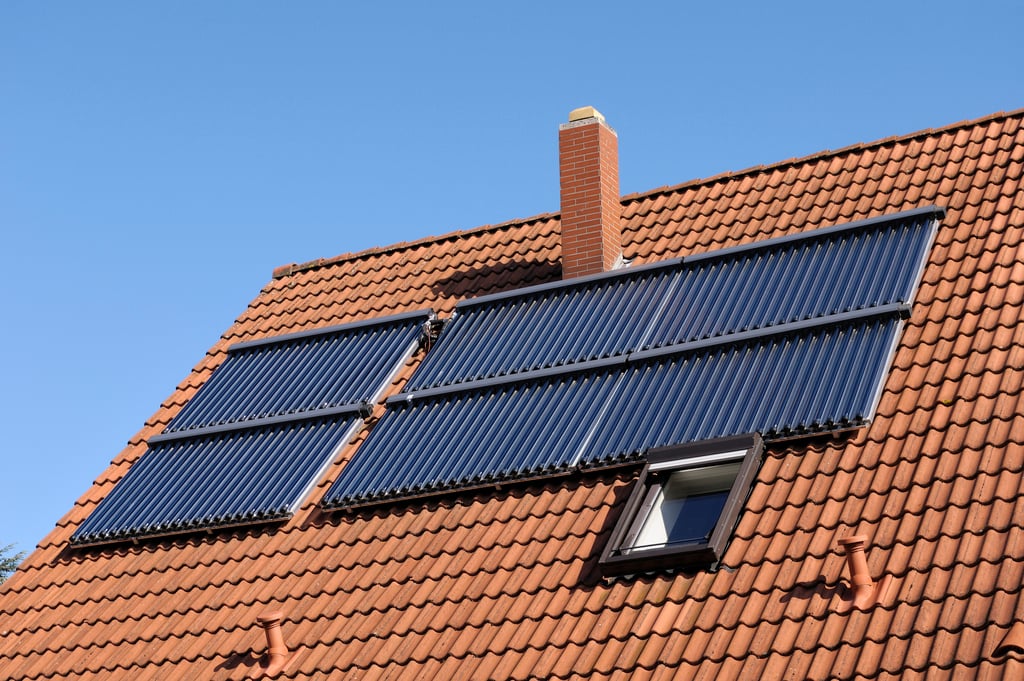
Using mechanical or electrical devices, active solar heating is a sustainable energy method that captures solar energy. This technology uses solar energy to heat water or space after converting it. It entails gathering solar energy from the sun, heating a liquid or air, and then sending the heated energy straight to your house to heat your hot water or your living areas. It is also possible to store the heat for subsequent use.
The components of an active solar heating system include collectors, collector control mechanisms, a distribution system, and a heat storage tank. Flat plate collectors are often used to absorb solar heat. You may fill these collectors with antifreeze, water, or any other liquid that absorbs heat.
After the heat is gathered, the fluid is moved to a distribution system or storage unit for instant usage by the controller turning on a circulating pump. Furnaces, baseboard heaters, and radiant floor heating system for homes are a few ways to transfer the solar heat.
One drawback of active solar heating is that in colder climates, it would not be able to offer enough warmth, which would call for the usage of a backup system such as heat pumps, boilers, or radiant heating systems.
Active solar water heater cost: $2,000 to $4,000
| Pros | Cons |
| Offers a sustainable heating option | Involves a greater upfront expense |
| Reliant on conventional heating systems for operation | Needs a backup power supply |
| Helps reduce the cost of energy bills |
8. Electric Space Heaters
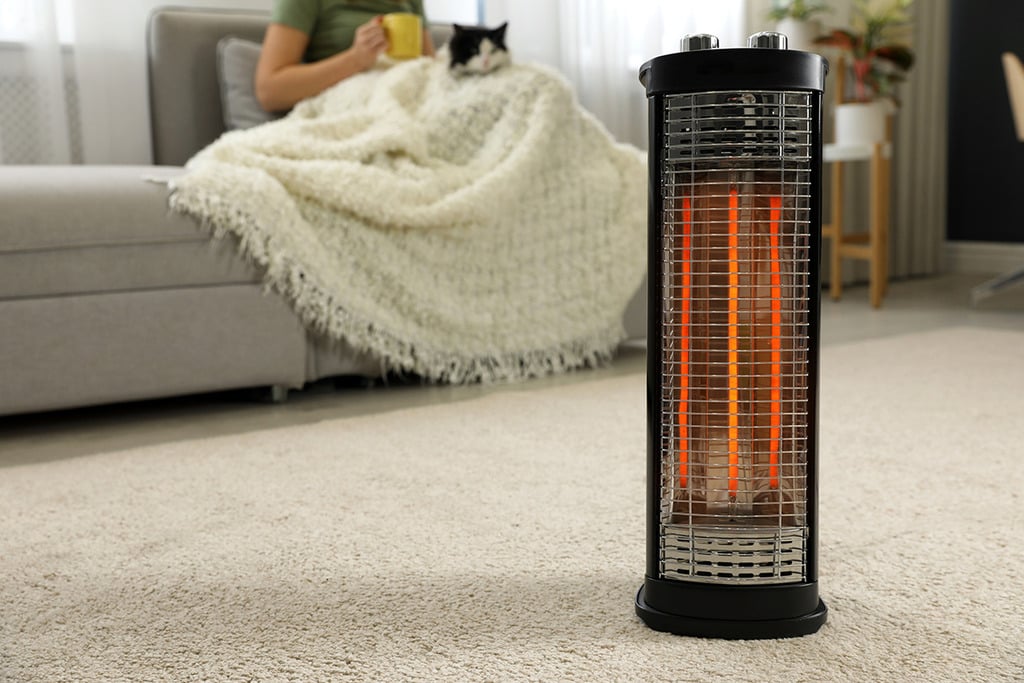
Electric space heaters are an inexpensive way to warm up a smaller room or give additional warmth to your living area during the winter months.
Often called portable or plug-in heaters, these units function instantly as soon as you plug them in and turn power into heat. They are a practical option for those who would rather not deal with the complexity of other heating systems since they are easy to set up and don’t need gas or venting.
However, while using this kind of electric heating systems for homes, safety must always come first. It is essential to choose versions that provide overheating safety and instantly shut off if they tip over.
Electric space heater cost: $40 to $200
| Pros | Cons |
| Transportable and simple to use | Larger places may not be adequately warmed |
| Delivers immediate heat to specific regions | Safety risks in the event that the device unintentionally topples |
| Perfect for warming up tiny areas | |
| Easy and trouble-free setup |
9. In-Floor Radiant Heating Systems
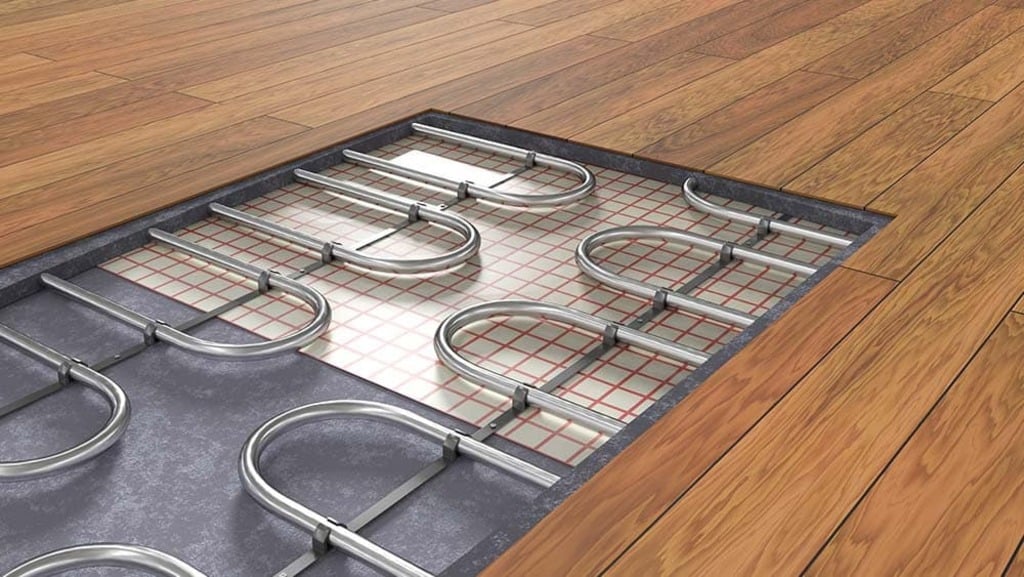
Imagine walking onto a toasty floor upon awakening on a cool morning. That’s precisely what the best heating systems for homes are capable of providing!
This approach entails installing unique tubes—sometimes in the walls or ceilings—into your concrete flooring. Warm water from a boiler or water heater flows through these pipes, providing steady warmth from the bottom up.
Radiant heating system home employs thermal radiation to heat the floor directly, as opposed to conventional heating techniques that warm the air. Oil, gas, propane, and electricity are just a few of the energy sources you may choose from, so you can choose an option that works for your budget and lifestyle. Under the floor, there are also electric wire-based radiant systems that heat your feet; they are often seen in restrooms.
Radiant heating assures a more uniform temperature throughout your room, removing cold patches, even if it takes a little longer to warm your house than forced air systems. Nonetheless, it’s important to remember that since underfloor plumbing is so intricate, installing and maintaining radiant floor systems may be difficult.
Radiant floor heating cost: $1,800 to $6,000
| Pros | Cons |
| Guarantees even heating | Installation may be expensive. |
| Very energy-efficient | Underfloor pipework presents difficult maintenance and installation issues. |
| It takes time to get your house warm. |
10. Hot Water Baseboard Heaters
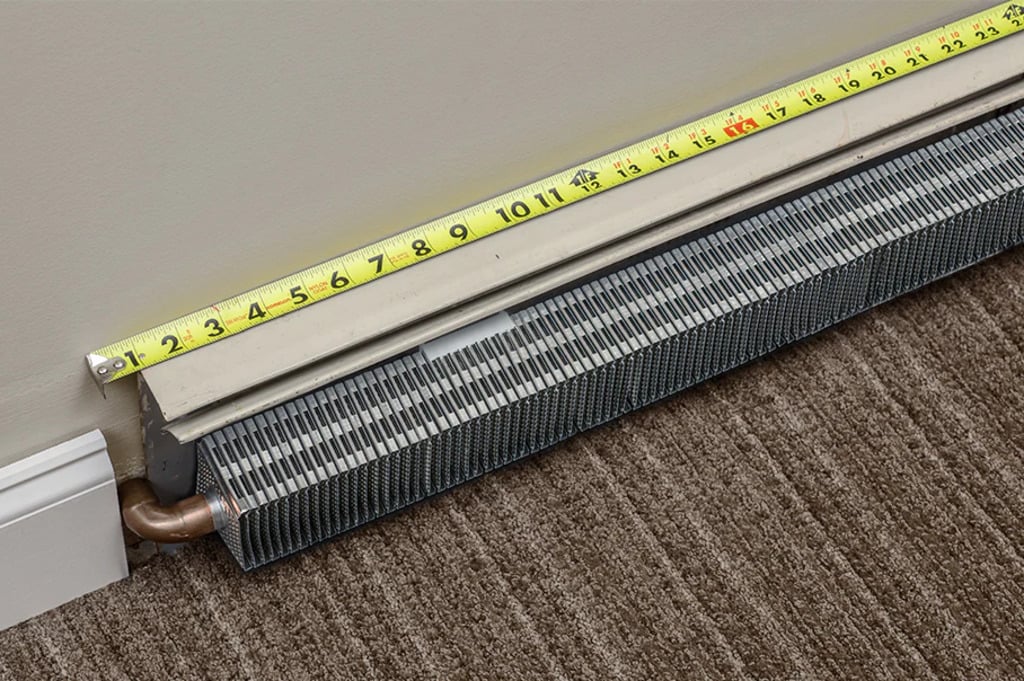
Hydronic heaters, another name for baseboard heaters, are a contemporary alternative to conventional radiator units. Through the use of water pipes, baseboard heating units positioned along the walls get heated water from a central boiler.
The most efficient home heating system uses large steel fins to radiate heat into the space. Natural convection drives the process, with hot air rising from the heater and cold air falling toward the baseboard.
The baseboard heating system’s boiler may run on electricity, gas, propane, or oil. This house heating system offers perfect temperature control since each room has its own baseboard heater installed.
Hot water baseboard cost: $200 to $400
| Pros | Cons |
| Energy-conserving | Incompatible with air conditioning units |
| Accurate temperature regulation | The pipes in your house might freeze if the boiler breaks down |
| Silently operates |
11. Fireplace
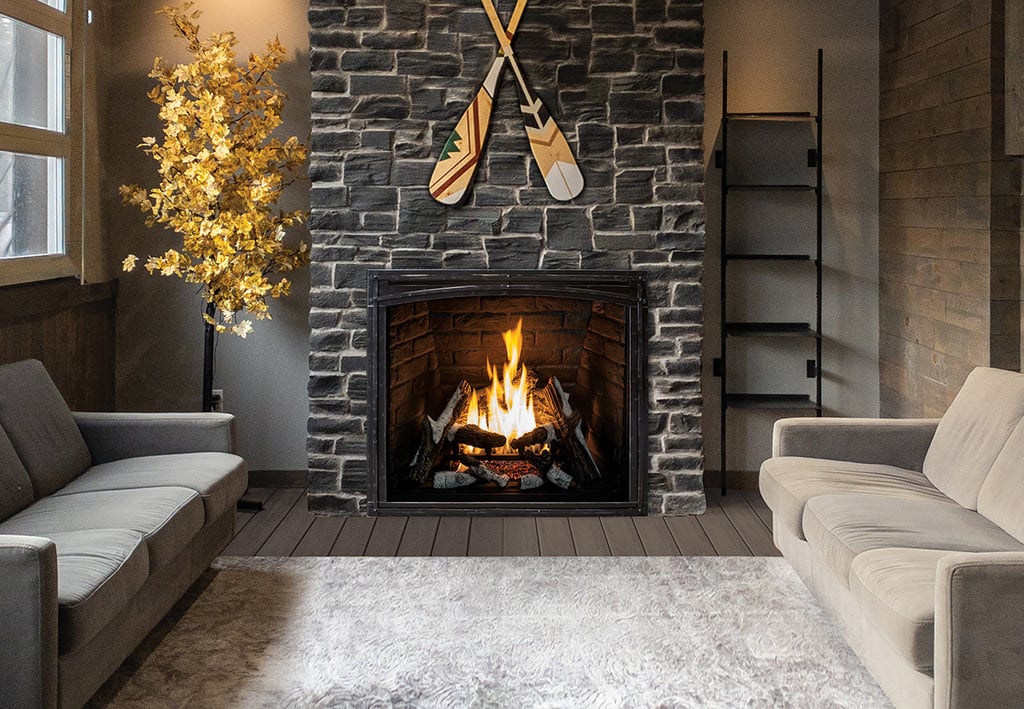
There’s something magical about curling up with a warm blanket beside a roaring fire. In addition to providing warmth, indoor fireplaces provide a tranquil and soothing atmosphere in your home.
Beyond the traditional wood-burning fireplace, you also have the choice of gas or electric fireplaces. Using either natural gas or propane, the gas fireplace burns cleanly and produces no ash residue. The contemporary option, on the other hand, is an electric fireplace, which is a boxed device with heated coils that receive energy.
Even though they look great, fireplaces aren’t the most energy-efficient heating option since a lot of heat escapes down the chimneys. Wood-burning fireplaces may also emit dangerous substances into the air, which might lower the quality of air inside.
Fireplace installation cost: $889 to $3,999
| Pros | Cons |
| Produces a peaceful atmosphere | Indoor pollutants are released by wood fires |
| Simple electric fireplace installation | High cost of installation for gas and wood fireplaces |
| Wood fires need constant attention. |
12. Wood Heating
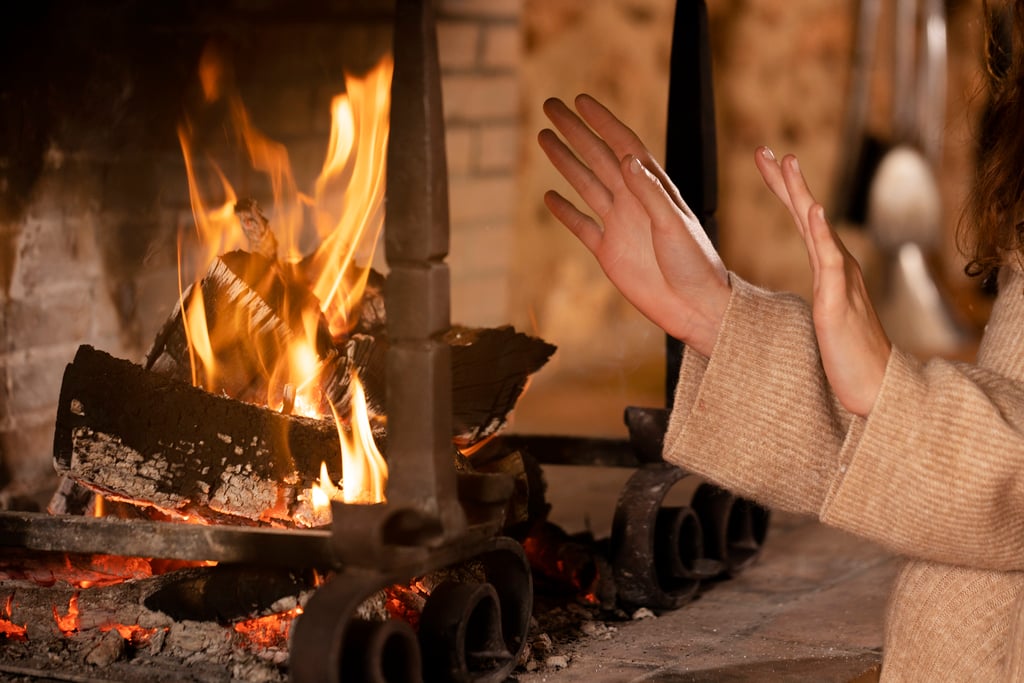
Homeowners look for low-cost methods of keeping their houses warm as winter draws near. Wood provides alternatives such as outdoor wood furnaces, wood stoves, pellet stoves, boilers, and brick heaters and is usually less expensive and more accessible.
The EPA, or Environmental Protection Agency, has implemented stringent rules to restrict smoke emissions from wood-burning heaters due to air pollution concerns. Pellet stoves have become a popular substitute because they use recyclable materials to make their pellets, which have a lower moisture content than wood.
Dry fuel is a clean-burning alternative for homes desiring the comfort of a wood-burning heater with less of an effect on the environment since it produces more heat and emits fewer hazardous emissions.
Pellet stove installation cost: $1,000 to $5,000
| Pros | Cons |
| An affordable heating solution for your house | May raise questions about safety |
| Stoves using pellets give clean burning | Unsuitable for providing all-around home heating |
Conclusion
Selecting the different types of home heating systems is an important choice that affects both energy expenses and comfort. With so many possibilities, it’s critical to thoroughly evaluate various heating system types in order to choose the one that best meets your demands. Conventional options like boilers and furnaces provide dependability, but heat pumps work year-round, particularly in mild regions.
Investigate radiant floor systems for even heating, and electric space heaters are a practical option for focused warmth. Ascertain enough insulation for your property prior to installation in order to preserve the best possible climate and avoid wasting energy. Furthermore, put safety first by following installation and use instructions.
Explore Further:–

